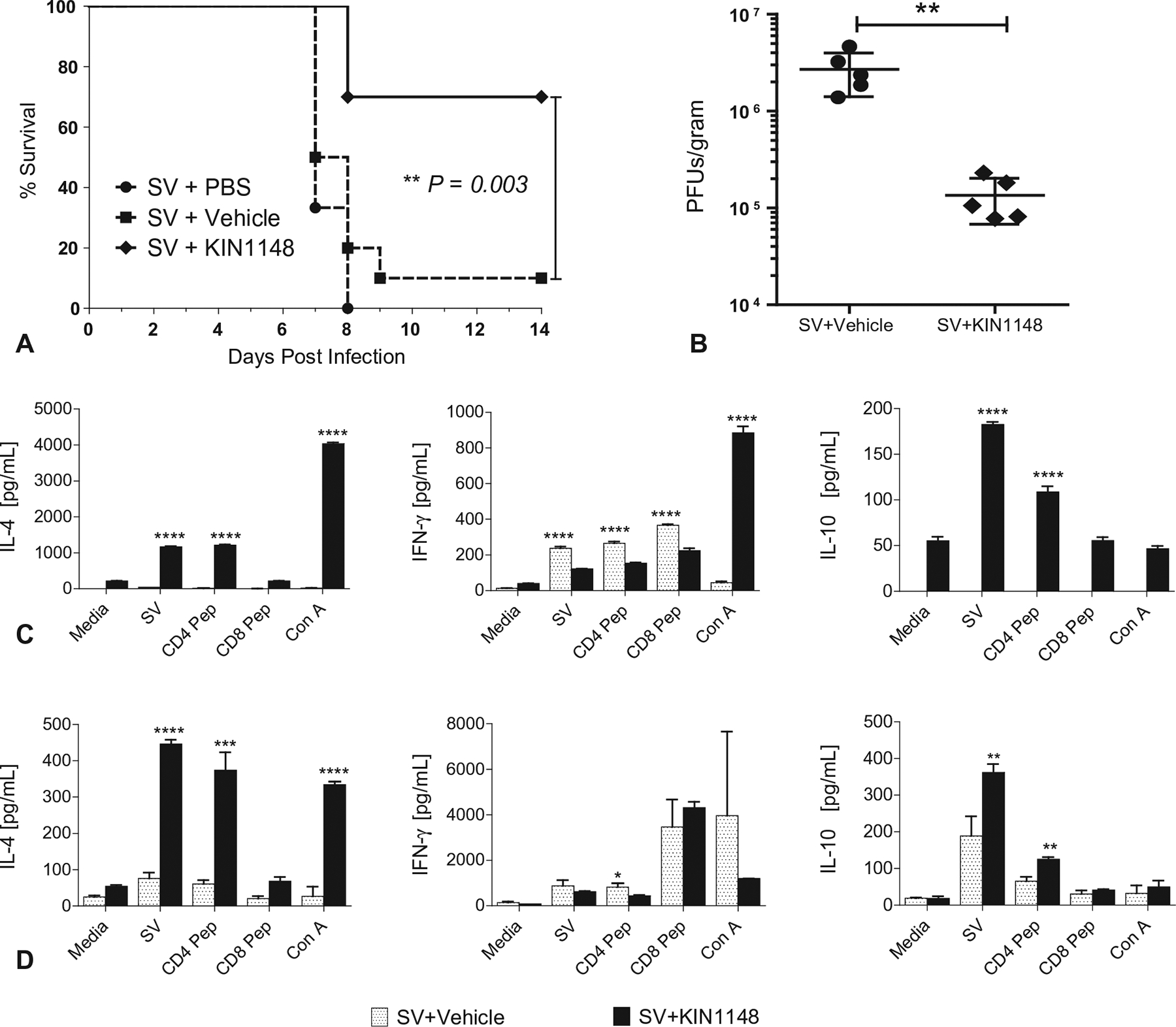Fig. 6.

Prime immunization alone with vaccine plus KIN1148 protects mice against lethal H1N1 challenge. Groups of C57BL/6N mice were immunized twice, 21 days apart, with vaccine plus PBS, vaccine plus vehicle, or vaccine plus KIN1148. (A) Survival (10 mice per group). (B) Viral load in lungs 3 days post challenge (5 mice per group). (C/D) Cytokine response of T cells from (C) lung and (D) lung-draining lymph nodes (5 mice per group). T cells from lung and lung-draining lymph nodes (collected on day 7 after challenge) were stimulated for 18 h as described in the legend to Fig. 3. Cytokines in culture supernatants were then measured using a multiplex ELISA. T cells derived from lungs were evaluated from individual mice. Bars represent the mean and SEM of KIN1148/vaccine and vehicle/vaccine groups. Cells derived from lung-draining lymph nodes were pooled by group. Stimulations were performed in triplicate with bars representing the mean and STD. Student’s two-tailed t-test was performed to compare the respective antigen-specific T cell responses from SV/vehicle control and SV/KIN1148 groups. *P < 0.05 **P < 0.01, ***P < 0.001, ****P < 0.0001 Data represent the results from at least two independent experiments.
